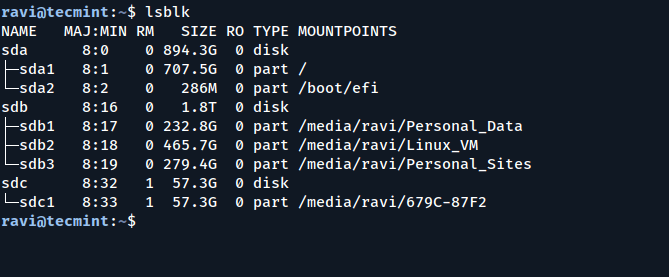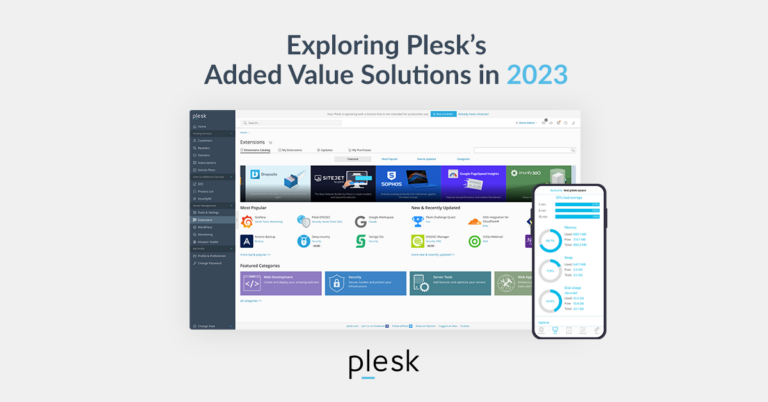
Kubernetes remains the most widely adopted container orchestration tool, holding approximately 92% of the market share, as reported by The Cloud Native Computing Foundation (CNCF). When setting up your deployment, you’ll need to choose between bare metal and VM- (virtual machine) based Kubernetes. However, the former offers several advantages over VMs, making it a popular choice for many.
This article will comprehensively explore the deployment of bare metal Kubernetes. This discussion will include how it operates, its benefits, associated challenges, a step-by-step deployment process, and much more. Let’s begin with some fundamentals.
Bare metal Kubernetes involves running clusters and containers directly on physical servers, bypassing virtual machines. In traditional Kubernetes deployments, virtual machines act as intermediaries between the hardware and containers. However, with bare metal, Kubernetes runs directly on the server hardware. Containers get direct access to the underlying hardware, which isn’t the case with VM-based clusters.
Bare metal Kubernetes enables applications to interact directly with physical hardware without the abstraction of hypervisors and virtualization layers. This direct access to computing resources enhances system performance and can reduce network latency by up to three times compared to VM-based setups. It’s a choice often made for performance-critical or latency-sensitive applications.
Key features
- Direct hardware access: In bare metal deployments, containers have direct access to the underlying server hardware.
- No hypervisor layer: Unlike VM-based Kubernetes, which relies on a hypervisor to manage VMs, bare metal setups skip this intermediary layer.
Use cases
Some of the common uses include the following:
- Performance-Critical Applications: Bare metal setups are preferred for applications where performance is a top priority, such as high-frequency trading systems, real-time analytics, or scientific computing.
- Latency-Sensitive Workloads: Applications that require extremely low network latency, like online gaming or telecommunications services, can benefit from the reduced latency in a bare metal setup.
- Resource-Intensive Workloads: Resource-intensive applications that require direct access to physical hardware, such as GPU-accelerated workloads, may find bare metal advantageous.
Optimized performance
Bare metal deployments excel in optimizing system performance and reducing network latency. This is achieved because it provides direct access to hardware devices, allowing containerized applications to interact with the underlying physical servers without the intermediation of hypervisors or virtualization layers. The absence of this abstraction layer leads to a significant boost in performance.
Reduced latency
Bare metal Kubernetes can also reduce network latency by up to three times. This makes it an ideal choice for workloads with demanding performance requirements, such as big data processing, live video streaming, machine learning analytics, and deploying 5G stacks in telecommunications, where low latency is paramount. In these scenarios, bare metal ensures that applications can harness the full power of the hardware and deliver fast, responsive results.
Elimination of migration costs
Bare metal servers are ideal for core business processes and offer significant cost savings. Organizations with established on-premise applications find running Kubernetes on existing bare metal infrastructure more affordable than migrating to the cloud. Additionally, this deployment will eliminate hypervisor overhead, allowing resources to be dedicated to the Kubernetes cluster, potentially reducing total ownership costs.
Enhanced control
Bare metal grants organizations extensive control over their infrastructure. This control empowers administrators to customize hardware configurations to precisely match their performance and reliability requirements.
Effective load balancing
Ensuring consistent access to applications is critical, and load balancing is essential to achieving this goal. In a bare metal environment, load balancers like MetalLB and kube-vip play a pivotal role. They facilitate the effective distribution of network traffic, guaranteeing that applications remain accessible and responsive.
Challenges
Some of the challenges you may face when deploying bare metal Kubernetes include the following:
Setting up and configuring
Setting up bare metal servers can be more complex than deploying virtual machines. Instead of using VM images, you must configure each bare metal machine individually. Tools like Canonical MAAS and Tinkerbell Cluster API Provider can assist, but they are still likely to be more involved than VM-based cluster setups.
Backup and migration
Due to the absence of virtualization, creating backups of bare metal servers or migrating them to different hardware can be more challenging. You can’t rely on VM snapshots or image-based backups for this purpose.
Node failure
Bare metal setups treat each server as a standalone node. If one server experiences a failure (e.g., an operating system kernel panic), it can impact all containers on that node. In contrast, virtual machines allow for better isolation, where the failure of one VM doesn’t necessarily affect others.
Operational complexity
Running Kubernetes on bare metal introduces operational complexity. Without a hypervisor layer, tasks typically handled by the hypervisor need to be managed manually. This requires a steep learning curve and significant time and resource investment. Interestingly, VM-based Kubernetes setups can also bring complexities, particularly when managing dual orchestration layers for VMs and Kubernetes pods.
Implementing best practices
Bare metal provides a blank slate, putting the onus on you to implement best practices for security, performance, and reliability. This necessitates a deep understanding of both Kubernetes and your specific hardware, making it a complex task.
Prerequisites
These are the things you need to have in place before you proceed with the steps listed below:
- Two or more Linux servers running Ubuntu 18.04.
- Access to a user account with sudo or root privileges on each server.
- The apt package manager.
- A terminal window or command-line access. We recommend using Kubectl, a command-line tool designed explicitly for Kubernetes.
Once you have the above, follow the steps below:
Step 1: Installation
Begin by installing Docker and related packages on all Kubernetes nodes. Use the following commands:
Update packages:
sudo apt-get updateInstall Docker:
sudo apt-get install docker.ioEnable Docker to launch at boot:
sudo systemctl enable dockerAdd Kubernetes software repositories
Use the command below:
sudo apt-get update
&& sudo apt-get install -y apt-transport-https
&& curl -s https://packages.cloud.google.com/apt/doc/apt-key.gpg | sudo apt-key addIf curl is not installed, add it using this command:
sudo apt-get install curlPerform package updates
Use the command below:
echo "deb http://apt.kubernetes.io/ kubernetes-xenial main"
| sudo tee -a /etc/apt/sources.list.d/kubernetes.list
&& sudo apt-get updateExecute all the above steps on each server node.
Step 2: Kubernetes installation tools:
Install kubelet, kubeadm, and Kubernetes-cni using the following command:
sudo apt-get update
&& sudo apt-get install -yq
kubelet
kubeadm
kubernetes-cniStep 3: Deployment
Disable swap memory on each server
Use this command:
sudo swapoff -aAssign a unique hostname to each server node
Use these commands respectively:
Master node:
sudo hostnamectl set-hostname master-nodeWorker nodes (different names for each):
sudo hostnamectl set-hostname worker01Step 4: Create a directory for the cluster:
On the master node, run the command below:
sudo kubeadm init --pod-network-cidr=10.244.0.0/16After running the above command, ensure to take note of the provided kubeadm join message.
Step 5: Join worker nodes in the cluster
Connect each worker node to the cluster using the kubeadm join message you obtained in the previous step.
Switch to each worker node, enter the kubeadm join command, and repeat this for all worker nodes.
To verify the node status, go back to the master server and execute this command:
kubectl get nodesStep 6: Connect interrelated components through a pod network:
To enable communication between nodes, deploy a pod network. Choose from the available options and run this command:
kubectl apply -f [podnetwork].yamlBest practices
These are some of the best practices you must follow for effective deployment:
- Choose your machines wisely. Not all bare metal nodes are equal. Consider the hardware specifications and location of servers. Servers in a public cloud may lack control and long-term cost benefits compared to self-owned servers. Tailor your server choice to your workload types and use cases.
- Regularly update and upgrade your hardware. Keeping your hardware up to date is crucial. Regular upgrades help you take advantage of technological advancements and ensure security and performance are maintained.
- Don’t overestimate performance. While bare metal improves performance, the gain may be limited. VMs can offer efficiency close to bare metal for many workloads. Set realistic expectations to avoid disappointment.
- Employ monitoring solutions and automated alerts. Employ monitoring solutions and automated alerts to track your cluster’s performance and receive proactive notifications of potential issues. This approach helps maintain cluster performance and reliability.
- Automate node provisioning. Automation is key, especially for provisioning bare metal nodes. Tools like MAAS or Tinkerbell can automate this process with the Kubernetes Cluster API. Manual configuration is not scalable.
- Avoid OS sprawl. Maintaining consistent operating systems and configurations is more challenging with bare metal nodes. You’ll need to put in extra effort to ensure software consistency across your infrastructure.
- Consider using VMs and bare metal simultaneously. You don’t have to choose between VMs and bare metal exclusively. Most Kubernetes distributions support both. Consider using a mix of VMs and bare metal nodes in different clusters or within the same cluster where it makes sense for your workload requirements.
Bottom line
For good reasons, bare metal Kubernetes has gained popularity in recent years. Enterprises are choosing it over VMs due to its advantages, which include greater control, enhanced data security and access control, eliminating migration costs, and optimized performance and latency.
However, deploying Kubernetes on bare metal servers comes with some challenges, such as operational and setup complexity and node failure, that you need to be aware of before getting started. To overcome these challenges, adhering to the best practices discussed in this article’s previous section is crucial.
If you’re ready to set up your deployment, consider exploring our dedicated server hosting packages. In addition to offering flexibility in choosing your preferred hardware, we also provide the option to select a server region, including the USA and EU.
FAQs
<strong>Should I run Kubernetes on bare metal?</strong>
+
<strong>What is the difference between bare metal and managed Kubernetes?</strong>
+
<strong>Can I install Kubernetes on bare metal?</strong>
+
<strong>What are the advantages of bare metal Kubernetes?</strong>
+
<strong>Kubernetes vs bare metal: What is the difference?</strong>
+





